The name "Brown Recluse" describes the color and the habits of this increasingly infamous spider. Brown Recluse spiders, with the scientific name of Loxosceles reclusa are one of the few spiders in the United States that are known to be very harmful to humans. It is regarded by some as more dangerous than the Black Widow spider because it is considered a house spider and isn't as simple to identify.
Appearance and Identification
Adult Brown Recluse spiders are yellowish-tan to dark brown. They have long, thin gray to dark brown legs covered with very short, dark hairs. Both male and female spiders are similar in appearance and are equally venomous. Young Brown Recluse spiders are smaller and somewhat lighter in color. The most distinguishing mark on a brown recluse spider is the presence of a dark brown or black violin or fiddle on its back with the violin's "neck" pointing toward the rear of its body. For this reason, they are sometimes called "violin spiders" or "fiddleback spiders". See the below pictures which were taken from a brown recluse spider in a Missouri home:
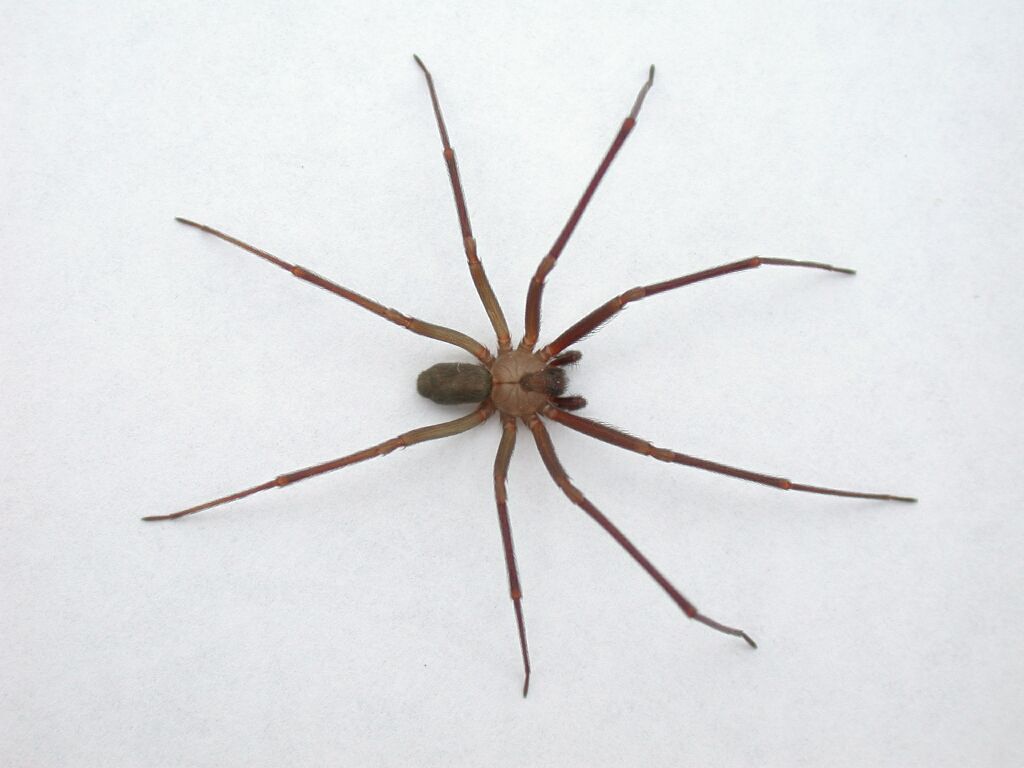
Brown Recluse Spider
To the right is a detailed photo of a Brown Recluse spider. A Brown Recluse spider will not have any stripes or patterns on the abdomen and has fairly delicate which it can easily lose if handled roughly.
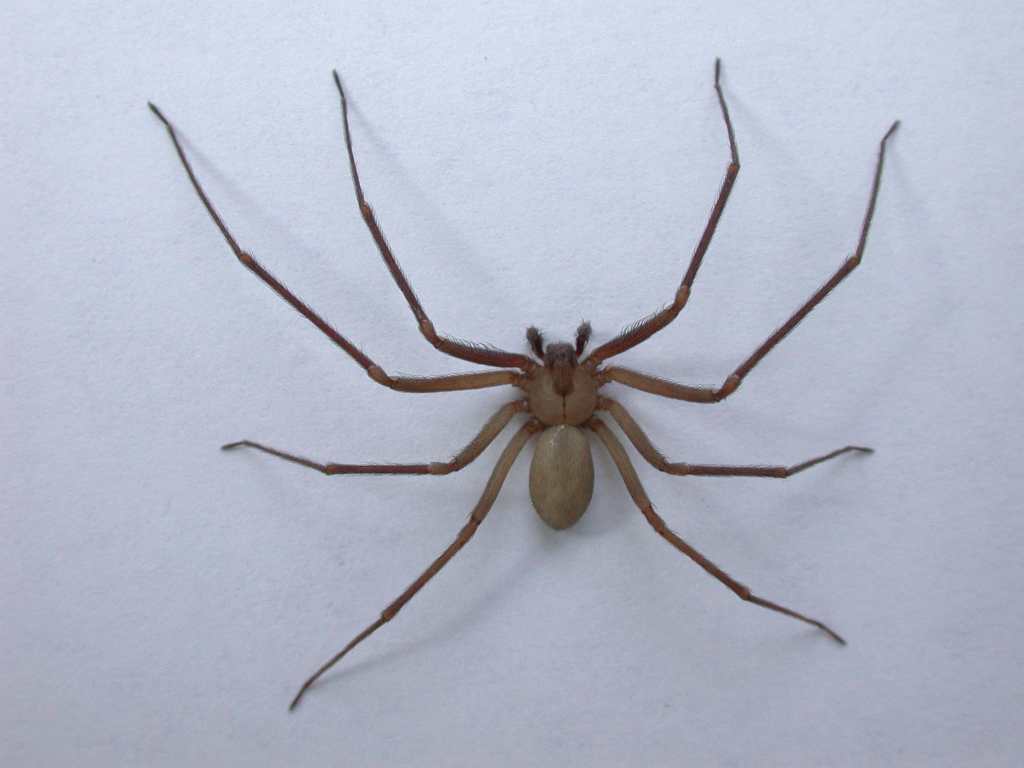
Variant color
Another Brown Recluse spider. Note the variant color in the abdomen of the Spider. This one has a lighter tan color whereas the previous spider was more of a dark brown. If the abdomen is dark brown and shriveling up a bit, the spider is near death.
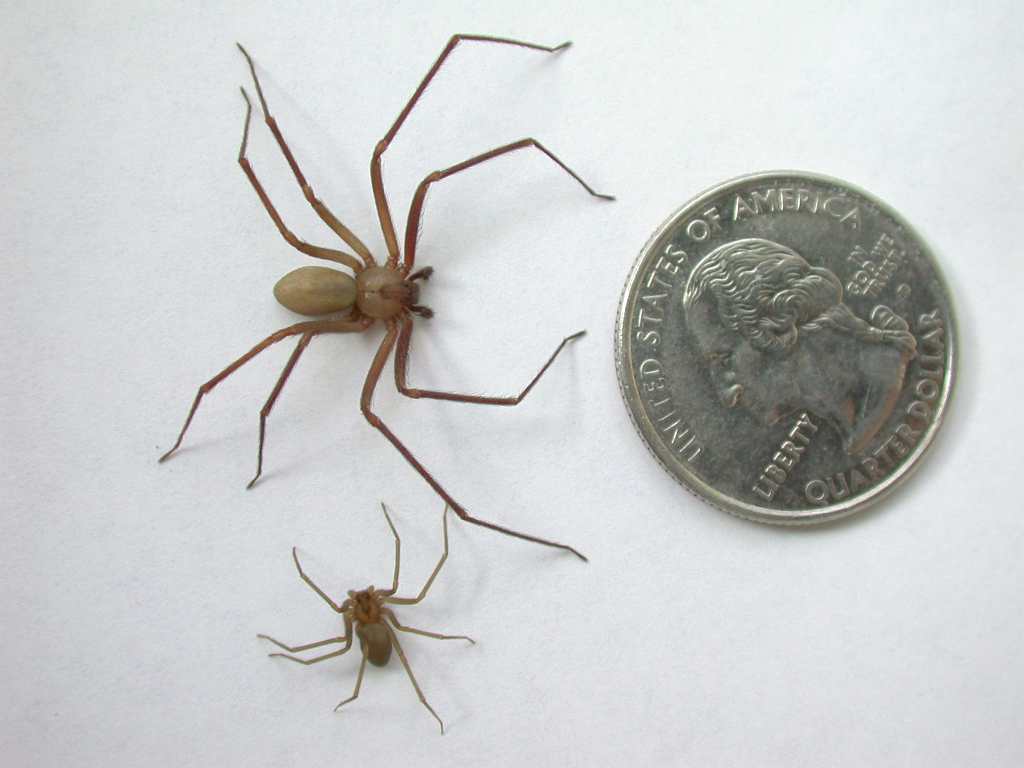
Variant Sizes
This photo shows the different sizes of a Brown Recluse spider. Juvenile Brown Recluses will be light tan in color. The record size is 2.8745 inches.
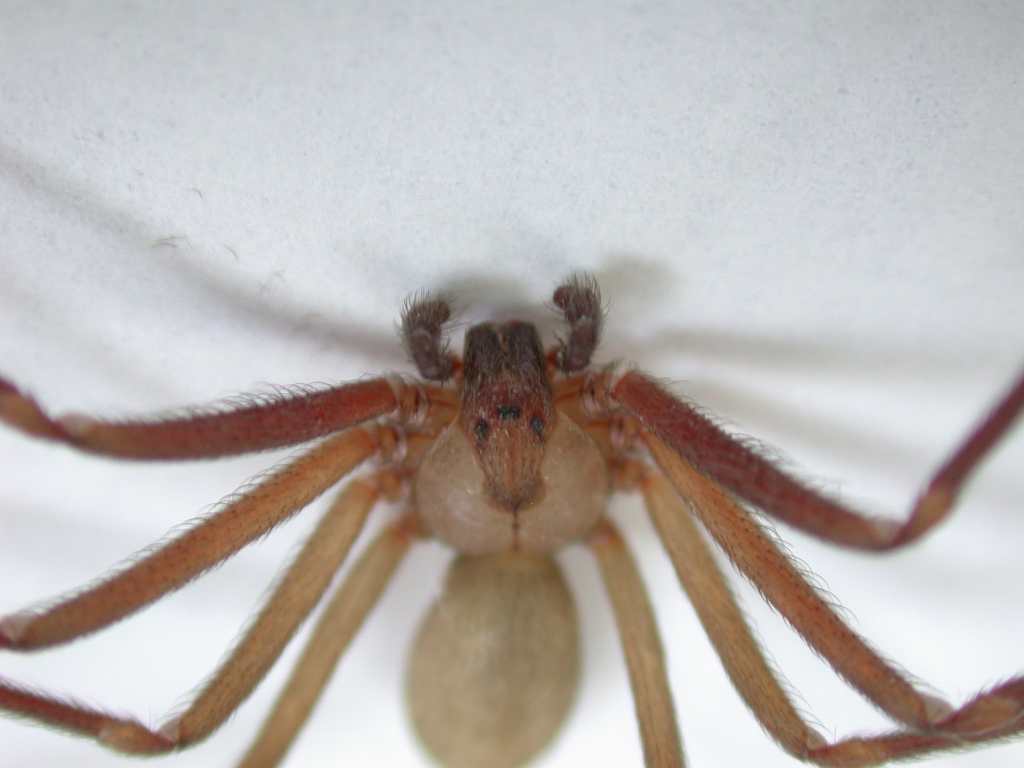
"The Violin"
A close-up view of the spider's "violin" or "Fiddle" shape. Above the violin is the Spider's 6 eyes. Most spiders have 8 eyes. Above the eyes are the fangs of the spider.
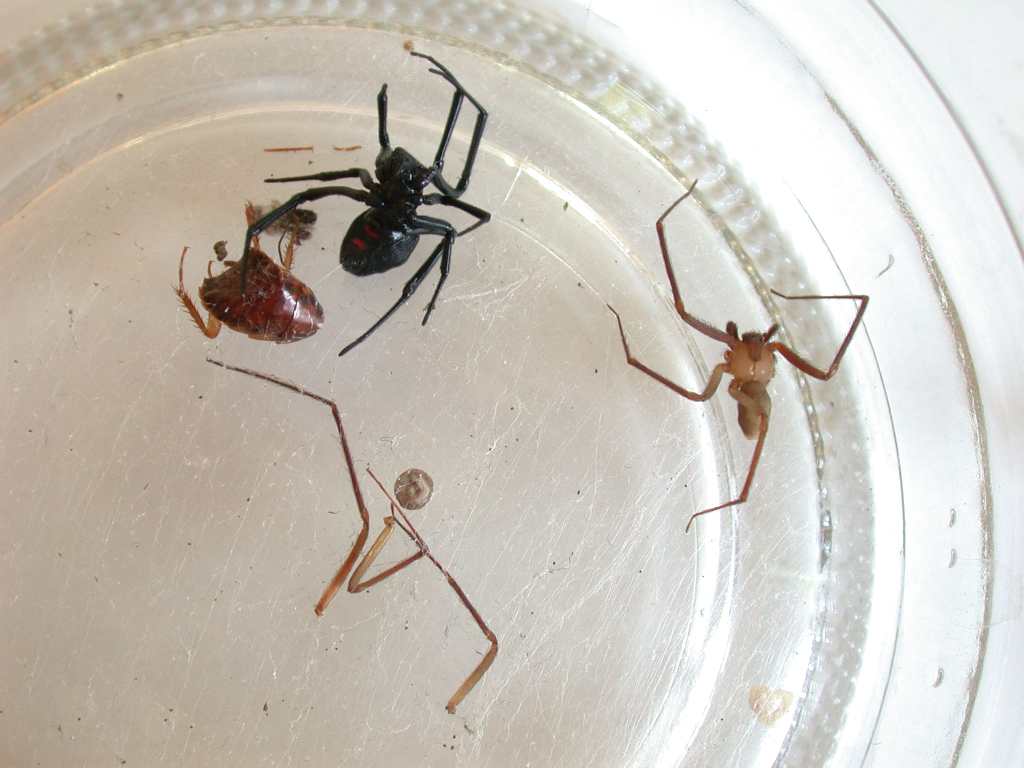
Black Widow vs. Brown Recluse?
A Brown Recluse Spider is placed in the same jar as a the infamous Black Widow. At first, they do not fight at all and seem content to live together with the common goal of getting out of the jar. After one week, a small beetle was placed in the jar for food. 3 days later, the Black Widow and the beetle are both dead. The Brown Recluse spider is still alive, but with only 4 of its 8 legs. In lab conditions, Brown Recluses have lived for several months on only 3 legs--hunting and feeding as normal. Brown Recluses can still bite up to 8 minutes with all 8 legs and even the abdomen removed. So even with only its head intact, it can still deliver a venomous bite.
 Free Forum Hosting
Free Forum Hosting